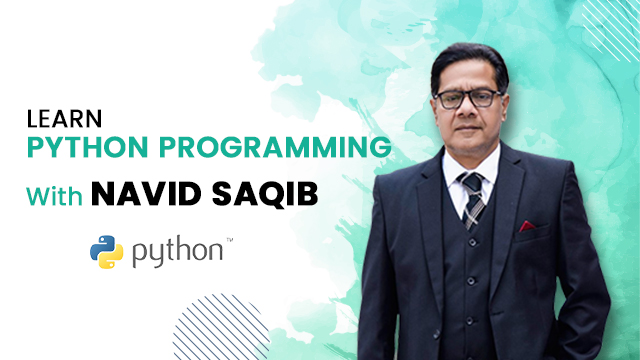The O-Level Computer Science curriculum syllabus is designed to introduce students to the core principles and concepts of computing. It covers a range of topics, including programming, algorithms, data representation, computer systems, networks, and databases.
The syllabus aims to equip students with the fundamental skills and knowledge needed to understand how computers work and how to solve problems through coding. This foundation is essential not only for excelling in exams but also for pursuing further studies or a career in technology.
Understanding these basic concepts is crucial for academic success, as it enables students to approach complex topics with confidence. The syllabus encourages logical thinking, problem-solving, and analytical skills—qualities that are invaluable in today’s digital world.
Students can become proficient in new technologies and create a strong foundation for future learning by grasping the fundamentals of computer science.
This guide will provide an overview of the key topics covered in the O-Level Computer Science syllabus, along with tips and strategies for effective study.
The principles of programming, important concepts, and real-world applications will all become clearer to readers, preparing them for tests and future computer science coursework.

Stay Ahead in Your Studies!
Don’t miss out on valuable resources that can help you excel in your academic journey!
Overview of O-Level Computer Science Syllabus
The O-Level Computer Science syllabus provides students with a foundational understanding of computer systems, programming, and data processing. It emphasizes both theoretical knowledge and practical skills, helping students to develop problem-solving abilities essential in the digital world.
The syllabus is structured to introduce learners to key concepts such as computer systems, data representation, programming, algorithms, and networks.

The balance between theory and practical components ensures students can apply what they learn in real-world scenarios. Theory covers essential concepts and principles, while the practical aspects involve programming tasks and projects, promoting hands-on learning.
Cambridge’s O-Level Computer Science syllabus consists of two main components: Paper 1 (theory) and Paper 2 (practical). Paper 1 covers the theoretical aspects of computer science, such as understanding systems, networks, and data management.
Paper 2 is a practical examination where students demonstrate their programming skills and the ability to solve problems using algorithms. This combination ensures a well-rounded grasp of the subject, equipping students with the necessary skills to pursue further studies or careers in technology.
Key Sections in the O-Level Syllabus
The O-Level Computer Science syllabus is divided into several key sections, each focusing on a fundamental aspect of computing.
Below are some of the core areas covered:
Computer Systems and Hardware
A computer system comprises hardware and software working together to perform various tasks. In the O-Level syllabus, students learn about the essential components of a computer system, including the central processing unit (CPU), memory, and input/output devices.
The CPU is the brain of the computer, executing instructions and processing data. Memory, including RAM and storage devices, is where data is temporarily or permanently stored.
Input devices (like keyboards and mice) and output devices (like monitors and printers) allow users to interact with the computer. Understanding these components and how they communicate is critical for grasping the basics of computer systems.
Data Representation
Computer systems use data representation as a means of storing, processing, and exchanging information. The basic building blocks of computer data are binary numbers, which are introduced to students throughout the syllabus.
To understand how data is handled, one must be able to convert between binary, decimal, and hexadecimal systems.
Students also learn about the binary storage of many data kinds, including text, graphics, and sound. They also look at how error-checking and data compression can be utilized to maximize transmission and storage.
Algorithms and Flowcharts
An essential ability for computer issue resolution is algorithmic thinking. Under the O-Level curriculum, students learn the fundamentals of algorithmic problem-solving and how to deconstruct difficult issues into smaller, more doable tasks.
Flowcharts are graphic representations of algorithms that show the stages involved in addressing a problem.
Learning to create flowcharts enables students to see the reasoning behind algorithms before putting them into programming languages. The basis for more complex programming abilities is an understanding of the fundamentals of flowcharts and algorithms.
Key Topics in O-Level Computer Science
The core concepts covered in O-Level Computer Science are important for comprehending computing principles. Programming, data structures, algorithms, and the fundamentals of computer hardware and software are among the topics covered in the curriculum.

Boolean algebra, networking, and logic gates are also important topics, giving students the foundational knowledge they need to solve issues and create programs.
It is essential to comprehend these fundamental concepts since they serve as the foundation for more complex computer science coursework. Students prepare for real-world applications in the computer industry by gaining practical experience through exercises.
Programming Basics
Programming is a critical component of O-Level Computer Science, where students learn the skills needed to create software programs and solve problems logically.
Introduction to Programming
Writing instructions that a computer can comprehend and follow is known as programming. Programming is essentially the process of creating useful software by utilizing fundamental ideas like variables, data kinds, and control structures.
Data types (such as integers, texts, and floats) specify the nature of the data, whereas variables hold data that may change while a program is running. Depending on certain situations, control structures, like loops and conditional expressions, regulate how the program runs.
Popular programming languages like Python, which is renowned for its readability and simplicity, are frequently introduced to O-Level students. As such, it’s a great option for novices. To provide students a comprehensive introduction to coding, other languages like Java and C++ might also be covered.
Writing Simple Programs
Writing simple programs is the first step towards learning programming and gaining fundamental knowledge. Making basic calculators, translating temperatures, and sorting numbers are common beginner exercises.
Students can practice arithmetic operations, variable usage, and the use of loops and conditionals, among other fundamental control structures, with the aid of these activities.
For example, a basic program might ask users to enter two numbers, then display the result of the addition. A program that sorts a set of input numbers in ascending order could serve as another illustration.
Students are prepared for future, more difficult coding tasks via these fundamental activities.
Logic Gates and Boolean Algebra
Logic gates and Boolean algebra are essential topics that introduce students to the concept of binary operations and digital logic, which form the basis of computer hardware.
Introduction to Logic Gates
Simple logical processes are carried out via logic gates, which are fundamental components of digital circuits. AND, OR, and NOT gates are among the various kinds of logic gates.
Every gate has a unique purpose: the NOT gate inverts the input signal, the AND gate outputs true only if both inputs are true, and the OR gate outputs true if at least one input is true.
Students can better comprehend how these gates can be coupled to carry out complex functions by using boolean algebra, a mathematical representation of logical expressions.
The application of logic gates in real-world computing ranges from simple arithmetic operations to intricate computer system decision-making algorithms.
Truth Tables and Logical Expressions
Students can better grasp how logical expressions act by using a truth table, which provides a list of all potential inputs and their corresponding outputs. Students can use truth tables to predict the behavior of a particular logic circuit.
Boolean ideas, such De Morgan’s laws, which simplify logical expressions, can aid in the design of effective digital circuits.
Comprehending these ideas is necessary to grasp the basic computer decision-making and data processing operations.
Practical Skills for O-Level Computer Science
A vital component of O-Level Computer Science is practical skills, which enhance theoretical understanding. Theory gives students the fundamental grasp of topics, but it is practical experience that really enables them to use this knowledge in real-world situations.

Students that possess practical skills such as coding, debugging, and algorithm design are better able to solve issues, reason logically, and comprehend the complexities of how programs operate.
Students can build a solid foundation for future education or a job in technology and improve their exam preparation by becoming proficient in these areas.
Developing Problem-Solving Skills
A key competency in computer science is problem-solving, which enables students to approach challenging problems creatively and logically. Gaining this ability necessitates a methodical approach to problem-solving, solution formulation, and coding implementation.
Students can improve their ability to solve problems by concentrating on developing effective algorithms, understanding debugging strategies, and practicing frequently.
This increases confidence when presented with difficult programming problems and aids in winning practical exams.
Algorithm Design and Development
The act of outlining a methodical strategy for resolving a specific issue is known as algorithm design. Students should start by having a thorough understanding of the issue description in order to develop an efficient method.
Algorithm design can benefit from the following steps:
- Understand the Problem: Read the problem statement carefully and identify the inputs, required outputs, and any constraints.
- Plan the Logic: Break down the problem into smaller, manageable parts. Decide on the steps needed to move from input to output.
- Create a Flowchart: Before writing code, draw a flowchart to visualize the process. Flowcharts use symbols to represent operations, decisions, and the flow of data, making it easier to identify potential problems.
- Write Pseudocode: Write a simple version of your algorithm using plain English. Pseudocode acts as a blueprint for your actual code.
- Implement the Algorithm: Convert your pseudocode into a programming language of choice. Make sure to follow the logical steps laid out in your plan.
It takes experience and knowledge of various problem-solving strategies to create effective algorithms. Continually trying to design algorithms for many situations aids in improving speed and logic.
Debugging and Testing Programs
Finding and resolving program faults is known as debugging, and it is essential to the software’s seamless operation.
Common methods for fixing include:
- Print Statements: Use print statements to check the values of variables and understand where your program might be going wrong.
- Code Review: Carefully review your code for syntax errors, logical errors, or overlooked conditions.
- Step-by-Step Execution: Execute the program line by line to trace the flow and detect where issues might arise.
- Use Debugging Tools: Integrated Development Environments (IDEs) often come with built-in debuggers that help in tracing code and identifying errors.
Program testing involves executing your code with various input combinations to see if the output is accurate.
It is also important to optimize your applications for optimal execution by cutting out pointless stages, steering clear of infinite loops, and efficiently controlling memory utilization. Students can develop code that is clearer and free of errors by practicing these abilities.
Hands-on Programming Practice
Practical programming exercises are essential for mastering coding skills in O-Level Computer Science. Students should engage in coding challenges that require them to apply various concepts like loops, conditionals, and data structures.
Regular practice not only solidifies their understanding of syntax but also enhances their ability to think algorithmically.
Using coding platforms and structured exercises, students can develop confidence in writing code and become adept at solving complex problems.
Best Coding Exercises for O-Level
Here are some recommended coding exercises for students looking to improve their programming skills:
- Basic Input/Output Programs: Start with simple programs that take user input and display outputs, such as calculators, greeting messages, and basic data conversions.
- Conditional Statements: Write programs that involve decision-making, such as determining if a number is odd or even, finding the largest of three numbers, or checking if a string is a palindrome.
- Loops and Iterations: Practice using loops with exercises like printing patterns, summing series, or generating Fibonacci sequences.
- Array Manipulation: Work on tasks that require storing, sorting, and searching data within arrays. Examples include finding the maximum and minimum elements, reversing an array, or implementing a sorting algorithm.
- Functions and Modularity: Create programs that use functions to break down complex tasks. This will help students understand the importance of code reusability and modular design.
By regularly practicing these exercises, students can strengthen their understanding of different programming concepts and improve their problem-solving skills.
Coding Platforms for Beginners
Several online platforms provide interactive coding lessons and exercises that are beginner-friendly. Some of the most recommended platforms for O-Level students are:
- Scratch: A visual programming language that allows students to create animations, games, and interactive stories by dragging and dropping code blocks. It is excellent for beginners to understand programming logic without the complexity of syntax.
- Codecademy: Offers beginner courses in various programming languages like Python, JavaScript, and HTML/CSS. Students can practice writing code in an interactive environment with guided lessons and exercises.
- Khan Academy: Provides tutorials and coding challenges in JavaScript and SQL. The platform is designed to make learning fun and engaging, with hands-on projects.
- Replit: An online IDE where students can write and run code in various languages. It also has community projects where students can collaborate, share code, and learn from others.
- Code.org: Offers coding exercises, games, and projects for students of all ages. It’s a great place to start learning the basics of programming logic and structures.
These platforms make learning to code interactive, engaging, and accessible, providing essential tools to develop programming skills from a beginner level.
Exam Preparation for O-Level Computer Science
Effective time management along with smart study techniques is necessary to prepare for the O-Level Computer Science exam. The main goals for students should be to comprehend fundamental ideas, practice coding, and frequently update their theories.

Learning can be strengthened by segmenting subjects into digestible chunks and utilizing a variety of review aids. Moreover, students will become accustomed to question formats and marking systems through regular practice with previous exam papers, which will facilitate the identification of areas in need of improvement.
Students can improve their confidence and performance by striking a balance between effective revision strategies and a sound exam plan.
Revision Techniques
Effective revision is key to mastering O-Level Computer Science. Here are some strategies to ensure efficient and thorough preparation:
Effective Study Methods
One of the best ways to study for computer science is by breaking down larger topics into smaller, more manageable sections. This approach prevents feeling overwhelmed and allows students to focus on mastering each part before moving to the next.
For example, instead of tackling the entire subject of data structures in one go, start with basic concepts like arrays and gradually progress to more complex topics like stacks and queues.
Mind maps and flashcards are also helpful tools for quick revisions. Mind maps can visually connect different concepts, making it easier to remember the relationships between them.
Flashcards, on the other hand, can be used to reinforce definitions, syntax rules, and key facts. Regularly reviewing these aids ensures that essential information stays fresh in your mind as the exam approaches.
Solving Past Papers
Past papers are one of the most effective resources for exam preparation. Practicing with these papers helps students understand the exam pattern, the types of questions asked, and the way topics are typically framed.
It also provides insight into which areas are frequently tested and helps in mastering time management.
When using past papers, it’s essential to review your answers with the mark schemes provided. This will give you an idea of how points are awarded and what examiners look for in a perfect answer.
Pay attention to the keywords used in the mark schemes and try to incorporate them into your responses to improve your chances of scoring higher.
Time Management During Exam
Time management can make a significant difference in how well you perform during the exam. It is essential to allocate time wisely, both during your preparation and on the exam day.
Balancing Theory and Practical Sections
O-Level Computer Science exams usually consist of theoretical questions and practical coding exercises. To excel, students must divide their study time effectively between these two areas.
Start by allocating a fixed number of hours each week to coding practice, ensuring that you understand the syntax and logic behind each programming concept.
Meanwhile, set aside separate time for revising theoretical topics like algorithms, data structures, and computer systems. This balance will ensure you are well-prepared for both sections of the exam.
It’s also a good idea to combine practical and theoretical revision. For example, when studying loops in programming, also review the theoretical concepts related to control flow. This will give you a more comprehensive understanding of how the theory applies to real-world coding scenarios.
Managing Time in the Exam Hall
Efficiently managing time in the exam hall is crucial to completing all sections. Begin by reading through the entire paper to understand the questions and determine which ones you are most confident about.
If you want to get those grades early, start with the ones you can answer quickly. Watch the time to make sure you have enough time for the trickier questions.
If there are practical coding activities on the test, set aside a certain amount of time to plan your code before you begin writing.
A well-planned strategy can cut down on mistakes and save time. Focus on organizing your responses in a straightforward way for the theoretical portions so that the examiner will allocate points with ease.
Best Resources for O-Level Computer Science
With the correct resources, learning computer science at the O-level can be considerably easier. A combination of tutorials, online courses, textbooks, and websites for coding practice might be helpful to students. This combination aids in the comprehension of theoretical ideas as well as practical abilities.
For students preparing for their exams, these resources offer thorough study help, ranging from suggested books to online platforms and exam instruments.
Recommended Textbooks
Textbooks are essential for building a strong foundation in Computer Science concepts. They cover key topics, from programming basics to algorithms and data structures, and align with the O-Level syllabus.
Best Books for O-Level Students
One of the top recommended books is Cambridge IGCSE Computer Science by David Watson and Helen Williams. This textbook provides clear explanations of concepts, diagrams for better understanding, and numerous exercises for practice.
It covers topics such as programming, databases, computer architecture, and networking, ensuring that students have a holistic grasp of the subject. Another great option is Complete Computer Science for Cambridge IGCSE & O Level by Alison Page, which includes engaging tasks and examples, making it easier for students to understand complex concepts.
Additionally, Computer Science Illuminated by Nell Dale and John Lewis offers a broad overview, suitable for students seeking to deepen their knowledge beyond the curriculum.
Online Learning Platforms
For students who prefer flexible and interactive learning, online platforms can be an excellent alternative. They offer video tutorials, quizzes, and coding exercises, making complex topics easier to grasp.
Free and Paid Resources
Students can utilize free platforms like Khan Academy and YouTube channels such as The Coding Train and freeCodeCamp. These channels provide engaging tutorials on programming and computer science basics.
Paid platforms, including Coursera and Udemy, offer structured courses that cover all the key concepts of O-Level Computer Science.
Websites like Brilliant.org also provide interactive lessons on logic, algorithms, and problem-solving, which are critical for mastering the subject.
Coding Practice Sites
Practical coding skills are essential for O-Level students. Platforms like HackerRank, Codewars, and LeetCode provide a range of problems that help students practice and improve their programming abilities.
These sites feature problems of varying difficulty, allowing students to start with basic tasks and gradually move on to more challenging ones.
Additionally, websites like Replit and Codecademy offer environments where students can code directly within their browsers, making it easier to practice without needing to install any software.
Past Papers and Exam Tools
One of the most effective ways to prepare for O-Level exams is by practicing past papers. This helps students understand the exam format, question types, and time management.
Importance of Practicing Past Papers
Practicing past papers allows students to familiarize themselves with the style of questions they will encounter in exams, helping to reduce anxiety and build confidence. It also gives them a chance to apply what they’ve learned, identify knowledge gaps, and improve their time management skills.
Websites like Xtremepapers, PapaCambridge, and GCE Guide are excellent sources for past papers. Students should also use revision apps like Quizlet. Which have flashcards and quizzes to reinforce key concepts and aid retention.
These resources combined can provide a well-rounded preparation strategy for students aiming to excel in O-Level Computer Science.
Conclusion
Finally, the O-Level Computer Science curriculum gives pupils a strong foundation in important ideas including computer systems, data structures, programming, and algorithms.
It is essential for aspiring computer scientists and IT professionals to comprehend these concepts. It is necessary to combine theory with practical abilities, though, as knowing the theoretical aspects alone is not enough. Practical experience not only improves understanding but also gets students ready for real-world computing and technology applications.
Regular practice is essential to accomplishing success on the O-Level Computer Science exams. Understanding and memory of the subject matter can be greatly enhanced by making use of the materials that are readily available, such as textbooks, online tutorials, and previous exam papers.
Using interactive tools and platforms can help reinforce ideas and increase interest in the topic.
Effective study habits and constant dedication are essential for anyone hoping to attain exceptional achievements. Accept the learning process and use every resource at your disposal to be successful.
For more tips and guidance on excelling in your studies, visit navidsaqib.com today!
FAQs (H2)
What is the best way to study for O-Level Computer Science?
The best approach to studying computer science for the O-Level is to combine time management skills, practical experience, and systematic study. Reviewing the curriculum will help you understand the main points.
Make a study plan that allots time for both theory and practice abilities in each subject. Use a range of materials, including instructional videos, online guides, and textbooks.
Use active learning strategies include teaching concepts to others, summarizing them, or putting them to use in real-world situations. Regularly reviewing and practicing with exercises and previous papers can also help you retain information better.
Which programming language should I learn for O-Level Computer Science?
Python and Java are frequently suggested programming languages for O-Level computer science. Python is very well-liked because of its easy-to-understand grammar and readability, which make it perfect for novices. ss
From data analysis to web building, it is widely used and adaptable. In contrast, Java is well-known for its object-oriented programming concepts, which are essential to computer science.
In the end, the decision can be based on the particular requirements of the syllabus, thus verifying your course rules is essential.
How do I practice algorithms for the exam?
Practicing algorithms for your O-Level Computer Science exam can be done effectively by following these steps:
- Understand the Fundamentals: Ensure you have a solid understanding of basic algorithm concepts, including sorting, searching, and recursion.
- Solve Problems: Utilize online coding platforms like LeetCode, Codewars, or HackerRank to practice algorithm problems.
- Create Pseudocode: Write pseudocode for different algorithms to understand their logic without worrying about syntax.
- Implement and Test: Code the algorithms in your chosen programming language and test them with various inputs to ensure they work as expected.
- Review Past Papers: Analyze past exam questions related to algorithms to familiarize yourself with the types of problems you may encounter.
Where can I find past O-Level Computer Science papers?
You can find past O-Level Computer Science papers through various resources:
- Official Examination Boards: Websites of examination boards often provide access to past papers and marking schemes.
- Educational Websites: Many educational platforms and forums have repositories of past exam papers that can be downloaded.
- Schools and Teachers: Your school or teachers may have archives of past papers and can guide you on where to find additional resources.
- Online Study Groups: Joining online study groups or forums can connect you with other students who might share past papers.
Are the most important topics in the O-Level syllabus?
The most important topics in the O-Level Computer Science syllabus typically include:
- Fundamentals of Programming: Basic concepts such as data types, variables, control structures, and functions.
- Data Representation: Understanding binary numbers, data types, and how data is stored and manipulated in a computer.
- Algorithms: Knowledge of common algorithms, their efficiency, and how to implement them.
- Databases: Basic concepts of databases, including tables, relationships, and SQL for data manipulation.
- Computer Systems: Understanding hardware, software, and how they interact.
- Networking: Basic concepts of computer networks, including types of networks and protocols.
- Social and Ethical Issues: Awareness of the ethical implications of technology and the importance of responsible use of computers.
Make sure to review your syllabus for any specific topics that may be emphasized in your exam.

Stay Ahead in Your Studies!
Don’t miss out on valuable resources that can help you excel in your academic journey!


